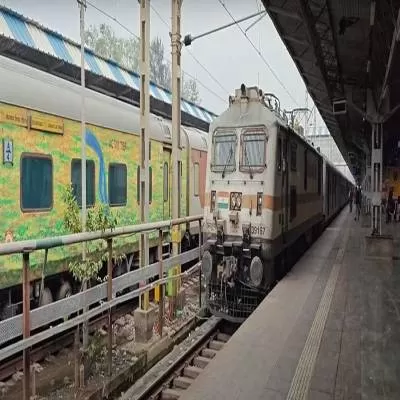
Mumbai, April 7 -- In a major infrastructural push, the Cabinet Committee on Economic Affairs, chaired by Prime Minister Narendra Modi, has approved four multitracking projects across three key states-Maharashtra, Odisha, and Chhattisgarh-aimed at significantly enhancing the capacity, efficiency, and sustainability of Indian Railways.
The projects will add approximately 1,247 km to the existing railway network and are expected to be completed by 2030-31, with a total outlay of Rs 186.58 billion. Collectively, they are set to generate about 379 lakh person-days of direct employment during the construction phase.
The approved projects: Sambalpur - Jarapda (3rd & 4th lines) Jharsuguda - Sason (3rd & 4th lines) Kharsia - Naya Raipur - Parmalkasa (5th & 6th lines) Gondia - Balharshah Doubling
These multi-tracking initiatives are strategically focused on key freight corridors, particularly for the movement of coal, iron ore, steel, cement, limestone, fertilisers, and agricultural produce. They will facilitate 88.77 MTPA of additional freight capacity and reduce congestion across some of Indian Railways' busiest routes.
A Sustainable Leap: Reduction in oil imports by 95 crore litres Lower CO? emissions by 477 crore kg, equivalent to planting 19 crore trees Support India's climate goals while improving logistics efficiency and reducing transport costs
Developmental Impact: 19 new stations will be constructed Enhanced connectivity to 3,350 villages and 47.25 lakh people Upliftment of two Aspirational Districts: Gadchiroli (Maharashtra) and Rajnandgaon (Chhattisgarh) Kharsia - Naya Raipur - Parmalkasa route to connect emerging industrial hubs like Baloda Bazar, encouraging cement and manufacturing units
These projects are part of the PM Gati Shakti National Master Plan, promoting integrated, multi-modal connectivity to drive self-reliance (Atmanirbharta) and regional economic development. With faster, cleaner, and more reliable services, the Indian Railways is steadily moving towards becoming the backbone of India's green and inclusive economic growth.
Published by HT Digital Content Services with permission from Construction World.
